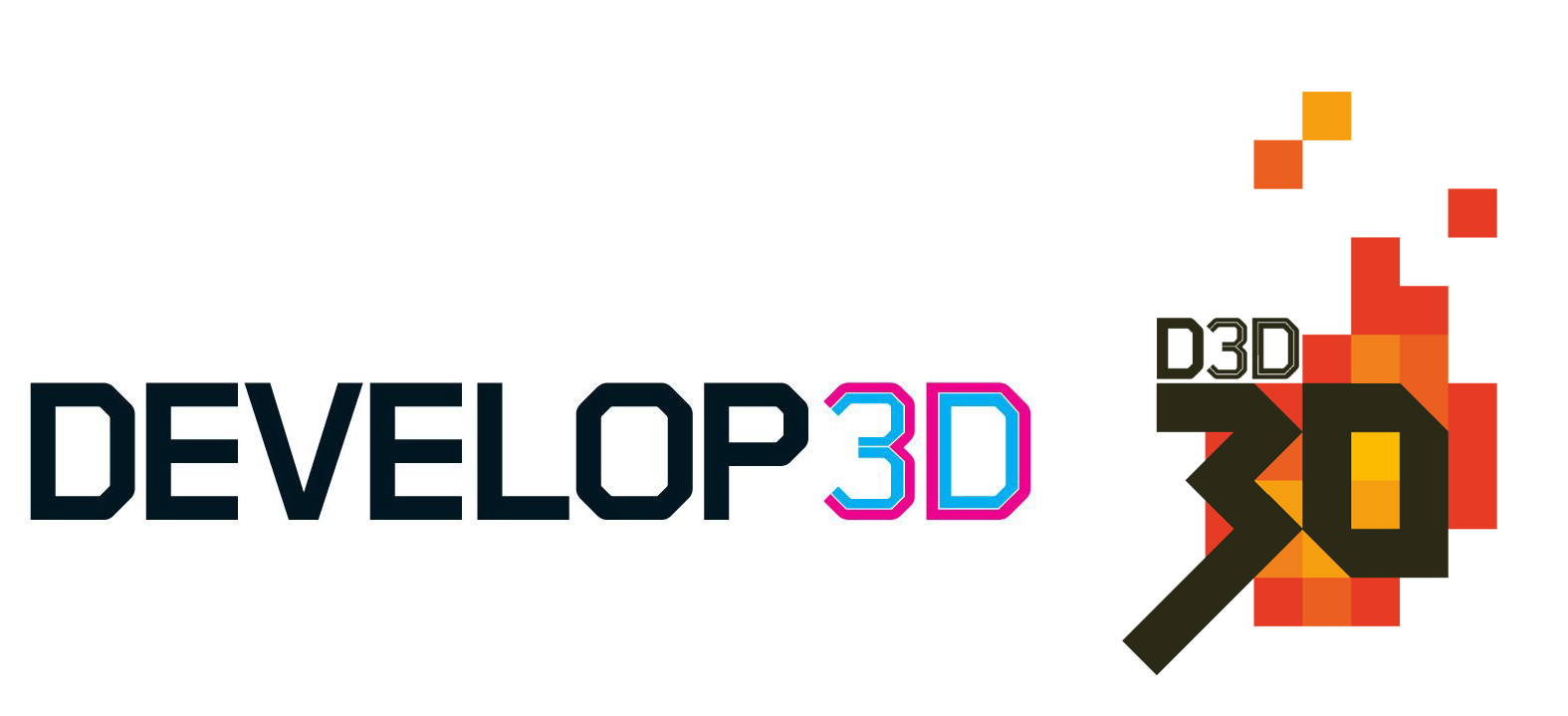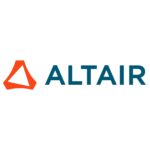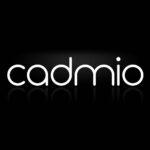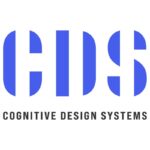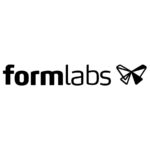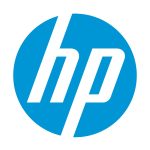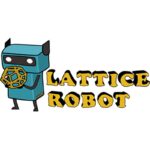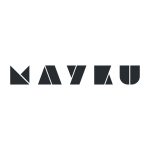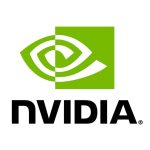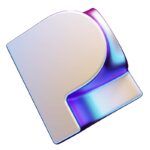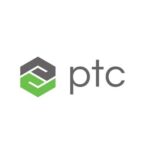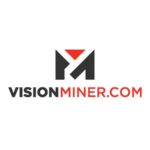Welcome to The D3D 30, our round-up of 30 new technologies from around the world that we firmly believe could give your product development work a major boost
This is the D3D 30 List from 2023 – To read the most recent D3D 30 List click here
The D3D 30 is our annual round-up of 30 new technologies that we believe have an important role to play in the product development processes of our readers.
Chosen from companies around the world, our hope is that you find something here for your own personal toolbox, to make you more productive in 2023.
Some of these technologies are from start-ups that we’re excited to see take their first steps out of stealth mode. Others come from established companies that continue to develop new capabilities within existing systems or launch brand-new tools to take customers in new and thrilling directions.
We’re delighted to showcase this illustrious group, selected entirely on merit. Our listing includes new takes on modelling, innovative ways to tackle big data challenges, fresh approaches to 3D printing and more – all with the aim of helping our readers design and build the products and systems of the future.
Our previous lists in 2020, 2021 and 2022 have highlighted new technologies that we’ve watched grow in terms of capability and adoption. Speaking with readers, we know that many of them have since been adopted in businesses around the globe and become vital to your workflows.
We have faith that the Class of 2023 will offer you many more such candidates – and hopefully, you’ll have the chance to get hands-on with many of these in the months to come, including at our free, single-day conference and exhibition, DEVELOP3D LIVE, which returns to the UK on 26 March 2025.
| 1000 KELVIN Amaize |
ALTAIR SimSolid Cloud |
ARTEC Ray II |
| AUTODESK Alias x VRED 2024 |
BASF FORWARD AM UltraSIM TestPad |
CADMIO Cadmio |
| CLOUDNC CAM Assist |
COGNITIVE DESIGN SYSTEMS Cognitive Additive |
DELL Dell Precision 5680 |
| DELTAHUB Carpio 2.0 |
FORMLABS FR Resin |
HEXAGON Nexus |
| HP Z2 SFF G9 workstation |
INSTRUMENTAL Instrumental |
LATTICEROBOT Latticerobot |
| LENOVO ThinkPad P16s Gen 2 |
MAYKU Engineering materials |
NAYA Create |
| NTOP Field Optimization |
NVIDIA Nvidia RTX 4000 SFF Ada Generation |
PLASTICITY Plasticity |
| PRINTFOAM 3D Printfoam |
PTC Creo+ |
SHAPR3D History-based Modelling |
| SHINING 3D FreeScan Combo |
SIEMENS Teams x Teamcenter |
VISIONMINER Nano polymer printbed adhesive |
| VIZCOM Vizcom |
VIZOO 3D xTex |
XENCELABS Pen Display 24 |
1000 KELVIN
Amaize
Marvellous metals
As 3D printing increasingly looks to support volume manufacturing, software products like 1000 Kelvin’s Amaize will be critical in terms of pushing back the boundaries of output quality and possible quantities.
Using Amaize specifically for metal 3D-printed parts, Amaize predicts printing errors and potential defects by analysing material, machine, tool path and scan strategies, while working to eliminate distortions and reduce overheating and support structures.
AI is at play here, of course, helping to identify problematic regions in builds. It does all this in the background, notifying you when it’s ready, but once assessed, Amaize also offers ready-made optimisation strategies.
By suggesting steps to correct build strategies, users can ensure they have a 3D printing workflow as close to guaranteed before the build file is exported to your 3D printer.
ALTAIR
SimSolid Cloud
Simulation without boundaries
Having acquired SimSolid back in 2018, Altair has continued to upgrade and enhance the product over the years. By enabling it as a cloud-based software, its next-generation simulation technology is now available from any web browser, anywhere and at any time.
Altair certainly seems confident in what it’s selling, with CEO James R Scapa going as far as to suggest that “anyone using conventional finite element tools will be left behind if they do not embrace this technology soon.”
Being cloud-native, the software looks to eliminate the need for geometry simplification and meshing, the most time-consuming aspects of the process, ramping up the speed for real results and allowing more complex models to be solved in minutes rather than hours.
ARTEC
Ray II
Big scan double act
Developed in collaboration with Leica Geosystems, part of Hexagon, the Ray II has the ability to capture large products and systems ten times faster than the original Artec Ray. Its 36 MP three-camera system supports a 3D point accuracy of 1.9 mm from 10 metres.
The Ray II’s big onboard touchscreen and clear user interface add to the sense that this is a high-end 3D scanner that anyone can get to grips with. Yet the big trick up the Ray II’s sleeve is its data compatibility in Artec Studio software with data from other Artec 3D scanners, such as the wireless handheld Artec Leo. This lets users provide comprehensively detailed scans of selected areas of bigger objects and scenes being captured.
AUTODESK
Alias x VRED 2024
Smooth automotive
A decade on from its acquisition by Autodesk, VRED really feels part of an automotive design suite capable of taking on all comers.
While v.2024 has seen Alias add more control and time-saving surface modelling tools, it’s the major overhaul of the user experience that users will notice most. VRED has shifted closer to the surfacing tool in both appearance and usability, with similarities including elements such as its icon sets and window management.
By sharing a common design language, the aim has been to make transitioning between the two tools more seamless and fluid, and easier to start using for those still holding back from using VRED in preference of other renderers.
BASF FORWARD AM
UltraSIM TestPad
Learning lattices
Having built an enviable reputation in the world of additive manufacturing materials, BASF Forward AM has moved into promoting the design capabilities of 3D printing, launching its UltraSIM product line to open up the world to lattices.
UltraSIM 3D Lattice Engine, powered by 2022 D3D30 entrant Hyperganic, enables users to quickly generate validated lattices at an extremely low price point. But if the software isn’t enough to help get your head around the physical properties of a lattice, the UltraSIM 3D Lattice Design Test Pad acts as a touch-and-feel sample chart for lattice parameters, with specific examples for footwear, protection and seating applications. The goal? Helping you find exactly the right lattice for the job.
CADMIO
Cadmio
iPad viz tool
With the Apple iPad already something of a staple among designers, it was only a matter of time before quick and easy visualisation tools became the norm. Step forward Cadmio, a real-time renderer that can quickly import a .STEP, .STL or .OBJ model and let you manually tweak and tune colours, materials and lighting to your preference.
Optimised for a touchscreen interface, it’s as simple as picking up the device and creating some eye-catching variants right in front of a client, when inspiration strikes — or perhaps when trapped on public transport.
With a catalogue of over 100 curated material presets and HDR backgrounds for all kinds of products, with new options added frequently based on user requirements, the gesture controls and sliders make for fast scaling and orientation.
CLOUDNC
CAM Assist
A CNC co-pilot
CAM Assist from CloudNC is billed as a CAM programming co-pilot, capable of generating machining strategies in seconds at the click of a button.
Currently available as a plug-in for Autodesk Fusion 360, it’s able to create machining strategies for 3-axis parts in short order, slashing lead times and freeing-up experienced programmers for more demanding jobs.
Using computational optimisation and AI inference to rapidly determine the right strategy and toolset to manufacture a part, along with the most appropriate cutting speeds and feeds from the user’s library, CAM Assist should be on the radar of anyone looking to tackle precision manufacturing while fending off rising costs.
Cloudnc.com
COGNITIVE DESIGN SYSTEMS
Cognitive Additive
Generative for real
Cognitive Design Systems’ (CDS) machine learning tools for 3D modelling have branched out in the direction of 3D printing and toolmaking feasibility, with tools for the former task capable of significantly reducing the time needed to perform build prep and part studies through automation.
Designs are analysed for performance, manufacturability and cost, while risks such as delamination, heat accumulation and surface roughness can all be inspected, with the most recent update even adding a carbon footprint calculator to ensure that all angles are covered on the cradle-to-gate pathway.
CDS Additive is already integrated with Stratasys’ GrabCAD software, meaning you might already have these tools at your disposal.
DELL
Dell Precision 5680
Performance meets portability
Dell has done it again with this sleek 16-inch mobile workstation that boasts the smallest footprint on the market.
It’s a superb, well-built machine, which also stands out from the crowd with its stunning UHD+ OLED InfinityEdge panel and haptic trackpad.
While it can take up to an Intel Core i9-13900H CPU and Nvidia RTX 5000 Ada GPU, it’s arguably best configured with the CAD and entry-level viz-focused Nvidia RTX A1000 or RTX 2000 Ada.
Even though EPR technology allows more power to be delivered through USB-C (165W versus 130W) such powerful processors always benefit from more, which is where the 240W Precision 7680 Workstation comes in.
DELTAHUB
Carpio 2.0
All in the wrist
Whipping your mouse around a desktop all day is a surefire route to long-term wrist problems, hence our interest in what DeltaHub is doing with its Carpio range.
Keeping the wrist elevated roughly a centimetre from the desk helps keep it at as natural an angle as possible, and takes pressure away from the wrist and towards the palm. Most importantly, the entire support glides across a desk mat, letting you move your entire arm and reducing damaging rotational movements.
While the first iteration was built using dozens of prototypes and 3D scans of hand moulds, the second variant has been built on the feedback of some 20,000 users. It’s a slick way to reduce the risk of carpal tunnel syndrome.
FORMLABS
FR Resin
Keeping it cool
In the year in which Formlabs launched its automated 3D printer fleet technology and its ever expanding catalogue of resins, it might have been easy to miss the arrival of the company’s new, certified flame retardant material, FR Resin.
FR Resin is UL94 V-0 and FAR 25.853 certified, both key requirements in many hazardous environments. So you can be confident that parts built from this grey material will have the necessary flame, smoke and toxicity (FST) ratings needed to be put straight into operation.
Marry these capabilities with the level of detail that Formlabs printers deliver, and you’ve got a great combo for delivering industrial parts such as electrical connectors, high-temp jigs and fixtures, under-the-bonnet automotive components, and interior plane and rail parts.
HEXAGON
Nexus
Building a network
While other vendors have focused on building tight-knit, brand-specific platforms, Hexagon has chosen a different approach, by opening up its Nexus platform to third parties in its bid to connect data and machines.
With real-time collaboration and feedback between engineering and manufacturing, Hexagon says Nexus for Developers will provide the tools to help anyone connect equipment, data and processes to give insights in real time, in context and in one place so they can make better-informed decisions.
Be it data from the latest million-dollar 3D printer that you’re considering splurging on, or a workshop full of kit you already have, you can only act on the data you can access.
HP
Z2 SFF G9 workstation
Remote control
This super-compact workstation made its way onto the D3D 30 last year, and while it has since had a significant 13th Gen Intel Core processor upgrade, that’s not the reason for its reappearance on this year’s listing.
The fact is that this compact workstation is playing an increasingly important role in centralised workstation deployments. For each HP Z2 Mini in a rack, IT Managers can now plug in the external HP Anyware Remote System Controller USB box to get a similar level of control over their workstation fleet as they already have over their servers.
Combined with HP Anyware remote access and collaboration software, this gives HP a joined-up solution to support the growing shift towards hybrid working.
INSTRUMENTAL
Instrumental
Spotting errors
Instrumental delivers real-time, traceable manufacturing data for valuable insights across the product lifecycle, using AI to find faults and inconsistencies that could cost you in the long run.
Using images and videos from the factory line, Instrumental’s AI is capable of spotting defects in manufactured products to the point that you can realise a design defect before that product ever ships.
Examples show aerial orientations in electronics that, if altered fractionally, might improve product quality, aid manufacturability and reduce waste and the need for replacements to be shipped, all from being picked up on the production line and fed back to the design team.
LATTICEROBOT
Latticerobot
Gyroids on steroids
Lattice infills might be the way to make your products lighter and stronger, and to use less materials, but at present, much of the information on how they might best be used is siloed away within organisations and research laboratories.
LatticeRobot is aiming to close the gap by bringing engineers together in a computationally enhanced working space to aggregate knowledge of lattices, textures, and related mesoscale geometry and applications. By exploring it together, everyone gets to discover functional lattices and gyroids that have the potential to aid their own product development work.
Data provided by hardware, software and consulting vendors refers users back to referenced products and services, helping them discover the best-fit products and services for their applications.
LENOVO
ThinkPad P16s Gen 2
Power efficient pro
When it comes to mobile workstations, we often place too much emphasis on performance and too little on the many other things that matter, such as power efficiency and affordability.
Here, Lenovo’s new 16-inch ThinkPad P16s Gen 2 scores highly, thanks to its AMD processor.
The AMD Ryzen 7 7840U not only packs 8 cores and a substantial 5.1 GHz boost into a 28W package, but also includes an integrated AMD Radeon 780M GPU. This GPU might not be super powerful, but it comes with a pro driver and is perfect for mainstream CAD.
Importantly, there’s no need for a separate GPU, which brings down costs and extends battery life.
MAYKU
Engineering materials
Masterful moulds
Multiplier, Mayku’s peerless pressure former for the desktop, is already the most detailed mouldmaker for low-intensity projects, but with its new range of engineering materials, the company is also delivering some intriguing new options for product designers and engineers.
The Multiplier can put down four tonnes of pressure to a single material sheet, replicating grooves up to 0.0004mm, and users can now capitalise on the properties of ABS, PMMA (Acrylic), and UHMW materials in their workflows.
ABS brings strength, durability and resistance to impact, heat and chemicals; Acrylic is a clear glass alternative, perfect for prototypes; and UHMW is a low-friction choice for making moulds.
With more materials in the pipeline, this is an easy-to-use piece of kit that, for good reason, is generating a lot of interest.
NAYA
Create
Hands-on work
This customisable, modular keyboard has been designed to adjust to your workflow as it progresses while remaining ergonomic no matter what the task.
A touchpad, jog-wheel, three-dimensional puck and trackball can all be hot-swapped into the keyboard docks, with each module holding its own battery, allowing Naya Create to support RF and Bluetooth 5 while remaining ultra-thin and ultra-portable.
The entire keyboard can be mapped to a user’s preference, giving users the freedom to customise in exacting detail everything, from a double-tap on a key to a three-fingered swipe. Integration for Autodesk Fusion 360, Adobe Creative Cloud and Blender are already available, with more promised.
NTOP
Field Optimization
Simplifying the complex
NTop has always been the most intriguing generative design software on the market, but its most recent release, nTop 4, has seen the company behind it go further to help engineers navigate the overwhelming number of design parameters.
The key benefit of Field Optimization is that the underlying material model used to compute the properties of a structure is now a function of any number of geometric design parameters, rather than a single value such as material density.
This allows engineers to focus on specifying the design intent and requirements of a part, while letting the software automatically determine complex geometric details such as lattice layouts, wall thicknesses, rib patterns and other spatially varying parameters.
NVIDIA
Nvidia RTX 4000 SFF Ada Generation
Compact powerhouse
Nvidia redefined the low-profile graphics card in 2021 with the Nvidia RTX A2000. Its double-slot board design blew other GPUs out of the water, with buckets of power for entry-level viz workflows.
The Nvidia RTX 4000 SFF Ada Generation takes things to new levels, by doubling the performance and laying on a whopping 20 GB of memory.
From GPU rendering to real-time 3D at 4K resolution, the 70W GPU takes everything in its stride. In some ways, it marks a true coming of age for the compact workstation, but stellar performance in a pint-sized package doesn’t come cheap.
PLASTICITY
Plasticity
Solid modelling
While the big CAD vendors continue to build out their products as all-singing, all-dancing workflow behemoths, we’re continuing to see new solid modelling tools appear on the market, and Plasticity is one of the most exciting of these.
Parasolid NURBS modelling combined with the best workflow innovations from polygonal modelling software forms the basis for the software, as a generation that has grown up using software like Blender increasingly looks to move into more complex solid modelling.
Similar to Blender, a community has already emerged offering YouTube tutorials galore, but bedroom designers aside, Plasticity offers up some serious pro-user features – including HOOPS Exchange file translation opening it up for wider workflow use. All this comes in a slick, easy to navigate UI, all for a pro license fee of $299 for four seats.
PRINTFOAM 3D
Printfoam
Forever blowing bubbles
The great advantages of 3D printing in terms of lightweighting have been expanded by the team at Printfoam 3D, while adding even more benefits.
Printfoam incorporates a controlled level of bubbles into 3D printing resin, drastically lightening parts, reducing material costs, and improving compressive properties.
More air and less resin mean rapid printing, allowing high-viscosity resins to be used and opening up a whole new world of materials.
Materials filled with ceramic, metal, glass or polymer fibres and particles can be designed to deliver tuned EM/RF, thermal, acoustical and mechanical performance when post processed, while the lightness means parts can be much larger than traditional 3D printed parts, requiring fewer support materials.
PTC
Creo+
SaaS for the pro engineer
Creo+, a cloud variant of PTC’s CAD system has finally launched, and while surprising a few people (by not being just a bulked-up version of sister product Onshape), it remains sufficiently tied to the existing product to make the transition to SaaS less stressful.
Key modelling tools remain, with Creo+ users able to collaborate on the same designs simultaneously with internal and external partners, accelerating development processes and reducing redesign work.
‘Fully upwards compatible’ from on-premise versions of Creo and built on the same core technology, no data translation is needed when heading into the cloud environment – although going from Creo+ to old-school Creo still comes with challenges. But with everything you need onboard, few will be looking backwards in any case.
SHAPR3D
History-based Modelling
Beyond concept
The relentless evolution of Shapr3D has seen its initial, plucky iPad 3D concepting tool elbow its way into workflows around the world, along the way launching rendering tools, breaking out across all mobile and desktop hardware, and now adding history-based modelling.
Parametric modelling will add to Shapr3D’s capabilities for users facing more complex engineering and manufacturing workflows. Yet the user experience remains as good as ever, with the ability to seamlessly switch between tablets and desktop computers, pull up a design on a smartphone in the workshop, or simply iterate on an idea while sitting on a plane with a tablet in hand.
More organisation is also being added, with a new Folders tool launching to provide an even more frictionless workflow and allowing users to share designs as necessary.
SHINING 3D
FreeScan Combo
Metrology multitasker
The multifunctional FreeScan Combo 3D scanner is the latest ‘swiss army knife’ handheld unit to be launched by Shining 3D.
Equipped with dual light sources – blue laser and infrared VCSEL – it has been developed for a wide number of applications, with modes to match, including 26 laser lines suitable for large simple parts; 7 parallel laser lines for scanning fine details, and a single laser line option that can obtain 3D data from narrow channels or holes. The infrared mode allows the FreeScan Combo to quickly set up and scan without markers.
Compact, ergonomic and weighing a smidge over 600g, it links to most inspection and design software simply for fast data sharing.
SIEMENS
Teams x Teamcenter
AI talk
Siemens is looking to assist all involved in the product development process in solving their challenges together with its new approach to Teamcenter, which adds Microsoft Teams features to the PLM system.
For example, service engineers or production workers can use mobile devices to document and report product design or quality concerns using natural speech while on the move, with Microsoft Azure OpenAI Service taking the quick, informal speech data and automatically creating a summarised report.
This goes as far as workers being able to record their observations in their preferred languages, which are then translated into the official company language. Their feedback can then be routed within Teamcenter to the appropriate design, engineering or manufacturing expert.
plm.sw.siemens.com
VISIONMINER
Nano polymer printbed adhesive
A stick-up
Sometimes it’s the little things that make all the difference, and when it comes to increasing throughput when 3D printing with FDM polymers, Visionminer has every detail of the workflow covered.
Its nano polymer printbed adhesive is designed for high-temperature engineering materials, keeping your part locked to the plate to combat warping, lifted edges and shifted base layers.
Designed for PEEK, ULTEM, PPSU and other high-performance FDM polymers, a thin smear of this build plate glue works for nearly every filament, including Nylon, ABS, PLA, PETG, PEI and PSU. Capable of withstanding pull-force pressures over 20,000 PSI, the adhesive works on multiple build plate surfaces, including borosilicate glass, carbon fibre and PEI.
VIZCOM
Vizcom
AI to ideate on
Not content with performing incredible transformations from sketches to renderings, Vizcom is a tool to help designers ideate and iterate on their ideas.
Built-in sketch tools and layers – including 3D forms – when combined with a generative text prompt help build a concept quickly, maintaining control over the infinite design variations that AI can throw up.
Erasing or sketching over the AI-generated render produces further updates, helping change and hone designs. The simple user interface lets users decide how much of their original sketch will influence the overall look, while a library of render styles can be selected, from soft pastels to colour-popping brights.
VIZOO 3D
xTex
Texture capture
Outputting high-resolution, physically based (PBR) texture maps, Vizoo’s xTex solution marries workbench-sized proprietary scanning technology with its own software. The results will grab the attention of designers in sectors ranging from footwear to automotive, as it automatically generates photorealistic material samples.
Working with its technology partner Nikon, Vizoo offers two scanning size options that capture any type of material quickly. An A4 size material swatch at 600 dpi takes just a couple of minutes.
XTex Software then automatically generates PBR texture maps from a material’s visual properties, while pattern recognition algorithms intuitively tile samples to create seamless textures or generate realistic colour variations of yarn dyes and multi-coloured materials on the fly.
XENCELABS
Pen Display 24
Screen time
Boasting a single surface sketching surface with glare reduction so good that you can use it in daylight, and more customisation options than you can shake a stick at, the Pen Display 24 is a joy to use.
The numbers back it up: the display delivers 1.07 billion colours for accurate colour reproduction on its 4K ultra-high-definition resolution (up to 3840 x 2160), and comes mounted on a stand that can be angled anywhere between 16 and 72 degrees.
Moreover, everything you need to get working quickly comes in the box with the product, including two pens, cables and the QuickKeys remote with integrated OLED display, with up to 40 hotkeys that can be setup for each application you use.

